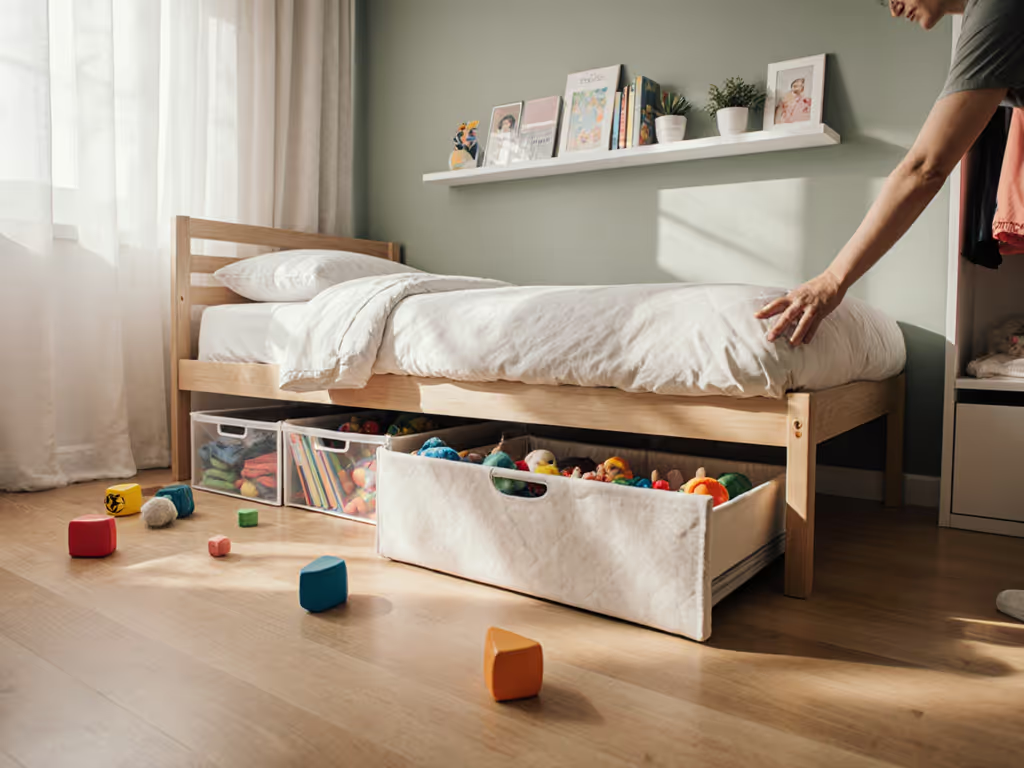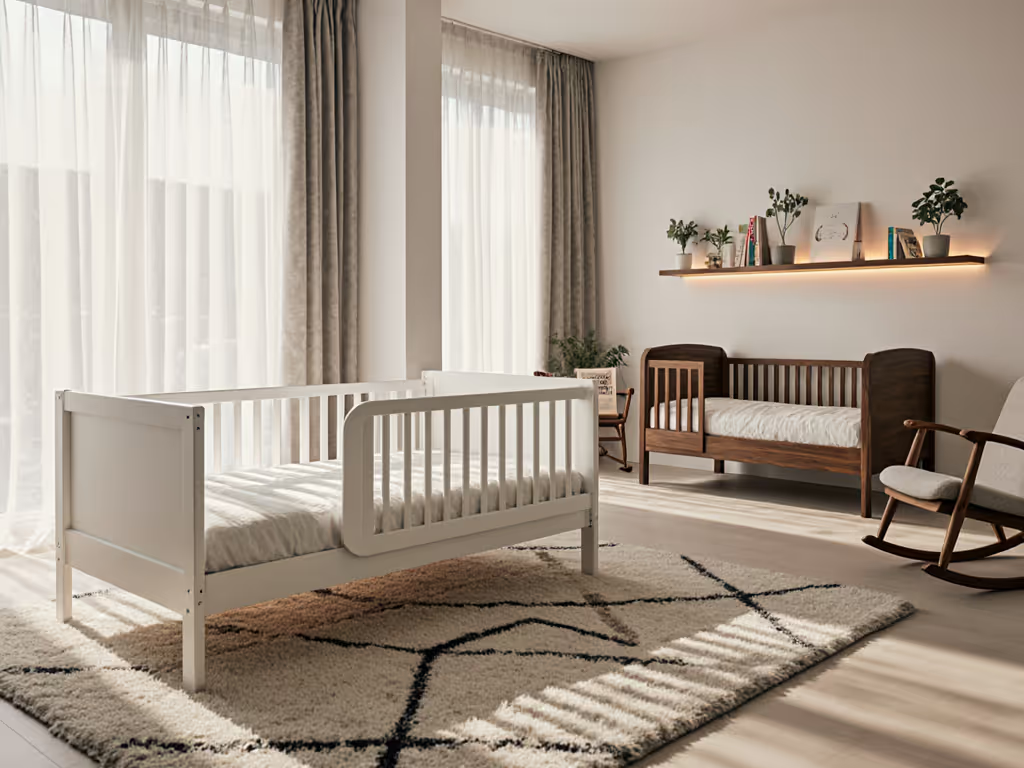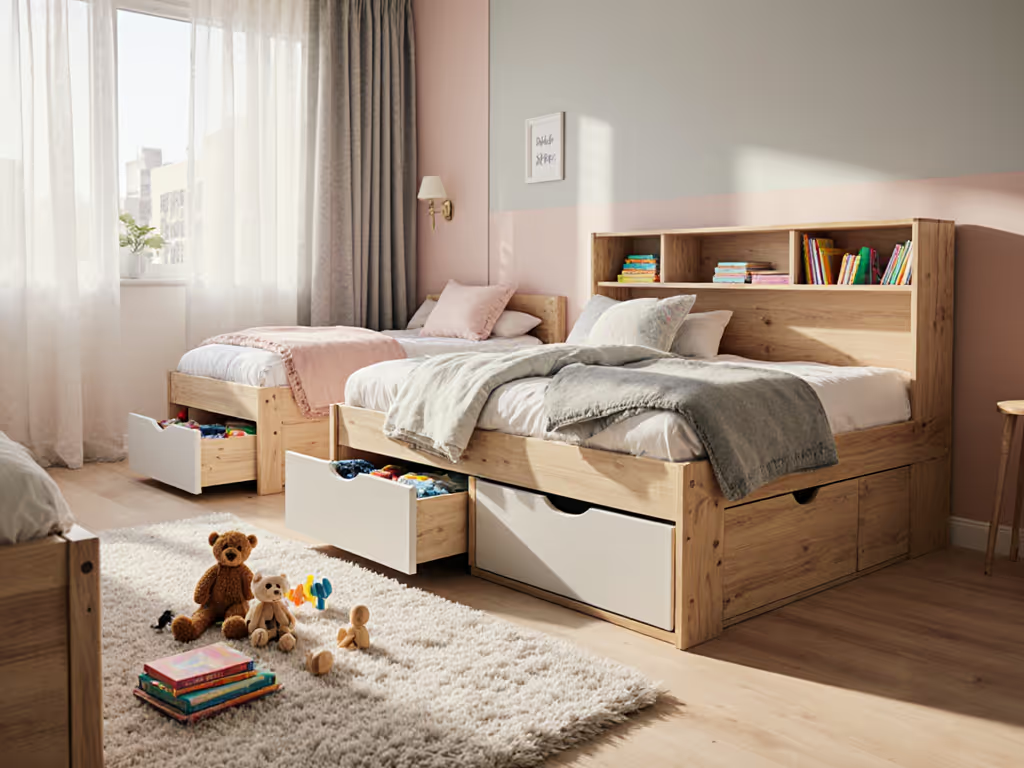
Toddler Beds Explained: Safe Sleep Solutions for Kids
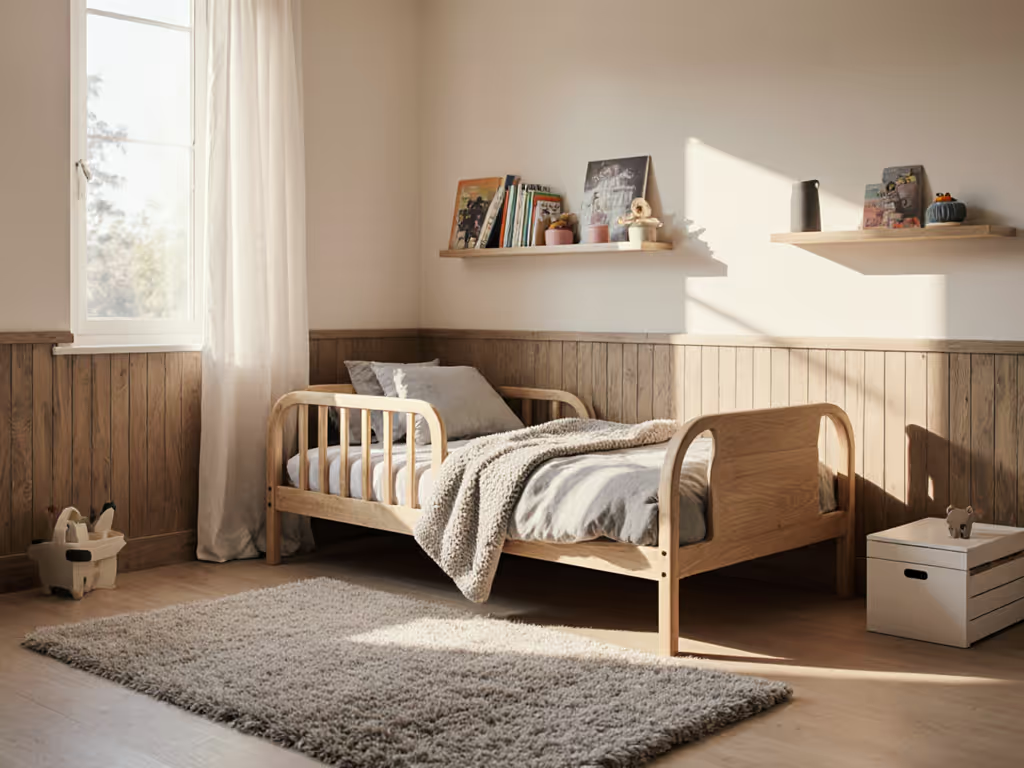
Did you know that over 60 percent of parents report struggles with their child's switch from crib to bed? The right toddler bed can make this major change much easier by offering both safety and comfort for your growing child. With sleep experts highlighting the impact of this step on independence and confidence, finding the perfect toddler bed becomes a key decision for families who want smooth nights and happy mornings.
Key Takeaways
| Point | Details |
|---|---|
| Transitioning to Toddler Beds | Transitioning from a crib to a toddler bed is a significant developmental milestone best approached with careful planning and emotional preparation. Ensuring the child is ready to make the switch is crucial for success. |
| Safety Features Matter | Prioritize safety features such as guardrails, low bed height, and JPMA certification to protect your child while sleeping. Create a childproof environment around the bed to minimize hazards. |
| Types of Toddler Beds | Understand the various types of toddler beds—Standard Rail, Montessori Floor, Convertible, and Sensory Design—to select an option that meets your child's needs and preferences. Each type offers unique benefits that support development and safety. |
| Eco-Friendly and Space-Saving | Opt for compact, multi-purpose toddler beds that utilize sustainable materials to meet both space and environmental concerns, encouraging responsible consumption from a young age. Consider investments that grow with the child to ensure long-term value. |
Defining Toddler Beds and Their Purpose
A toddler bed represents a critical transitional sleep solution designed specifically for young children navigating the complex journey from infant crib to big kid bed. Unlike traditional cribs or full-sized beds, these specialized sleeping platforms provide a safe, comfortable intermediate step that supports a child's developmental needs while offering parents peace of mind.
Typically designed for children between one-and-a-half to five years old, toddler beds feature distinctive characteristics that make them unique. Key design elements include:
- Low-to-ground height for easy child access
- Protective side rails preventing accidental rolling
- Compatibility with standard crib mattresses
- Compact dimensions suitable for small bedroom spaces
The primary purpose of a toddler bed goes far beyond simple sleeping accommodation. Sleep experts emphasize that these beds play a crucial psychological role in a child's development, offering a sense of independence while maintaining the security of a familiar sleep environment. When a child begins climbing out of their crib or exceeds its height safety limits, transitioning to a toddler bed becomes not just recommended, but essential for preventing potential injuries and supporting healthy sleep patterns.
Making this transition thoughtfully can transform what might feel like a challenging milestone into an exciting developmental moment. By selecting a toddler bed that balances safety, comfort, and your child's emerging sense of autonomy, you're providing more than just a place to sleep - you're creating a nurturing space that supports their growing confidence and independence.
Types of Toddler Beds and Key Differences
Toddler beds represent a diverse landscape of sleep solutions, each designed to meet unique developmental needs and family preferences. Convertible beds stand out as the most versatile option, offering parents a smart investment that evolves alongside their child's growth trajectory. These innovative designs typically transform from crib to toddler bed, and often extend into full-sized bed configurations, providing remarkable long-term value.
Four primary categories of toddler beds dominate the market, each with distinctive characteristics:
Here's a comparison of the four primary types of toddler beds:
| Type of Toddler Bed | Key Features | Best For | Notes |
|---|---|---|---|
| Standard Rail Bed | Side rails<br>Low height | Active sleepers<br>General safety | Matches crib mattress size |
| Montessori Floor Bed | No rails<br>Floor-level | Independent children<br>Easy access | Encourages autonomy |
| Convertible Bed | Multi-stage use<br>Adapts over time | Growing families<br>Long-term value | Often higher upfront cost |
| Sensory Design Bed | Specialized frames<br>Extra support | Children with sensory needs | May include calming features |
- Standard Rail Beds: Traditional design with protective side rails, offering maximum safety for active sleepers
- Montessori Floor Beds: Low-profile designs promoting independence and unrestricted movement
- Convertible Beds: Multi-stage beds that adapt to a child's changing size and needs
- Sensory Design Beds: Specialized frames supporting children with unique sensory requirements
When considering bed selection, parents should evaluate critical factors beyond aesthetics. Safety features, mattress compatibility, room dimensions, and potential for future adaptability become crucial decision-making elements. Montessori-style beds, for instance, encourage self-directed exploration by allowing children to enter and exit independently, while standard rail beds provide a more contained sleeping environment.
Ultimately, the perfect toddler bed bridges the gap between infant security and childhood independence. By understanding these nuanced design differences, parents can select a sleep solution that not only ensures safety but also supports their child's developmental journey, transforming bedtime from a challenge into an opportunity for growth and self-discovery.
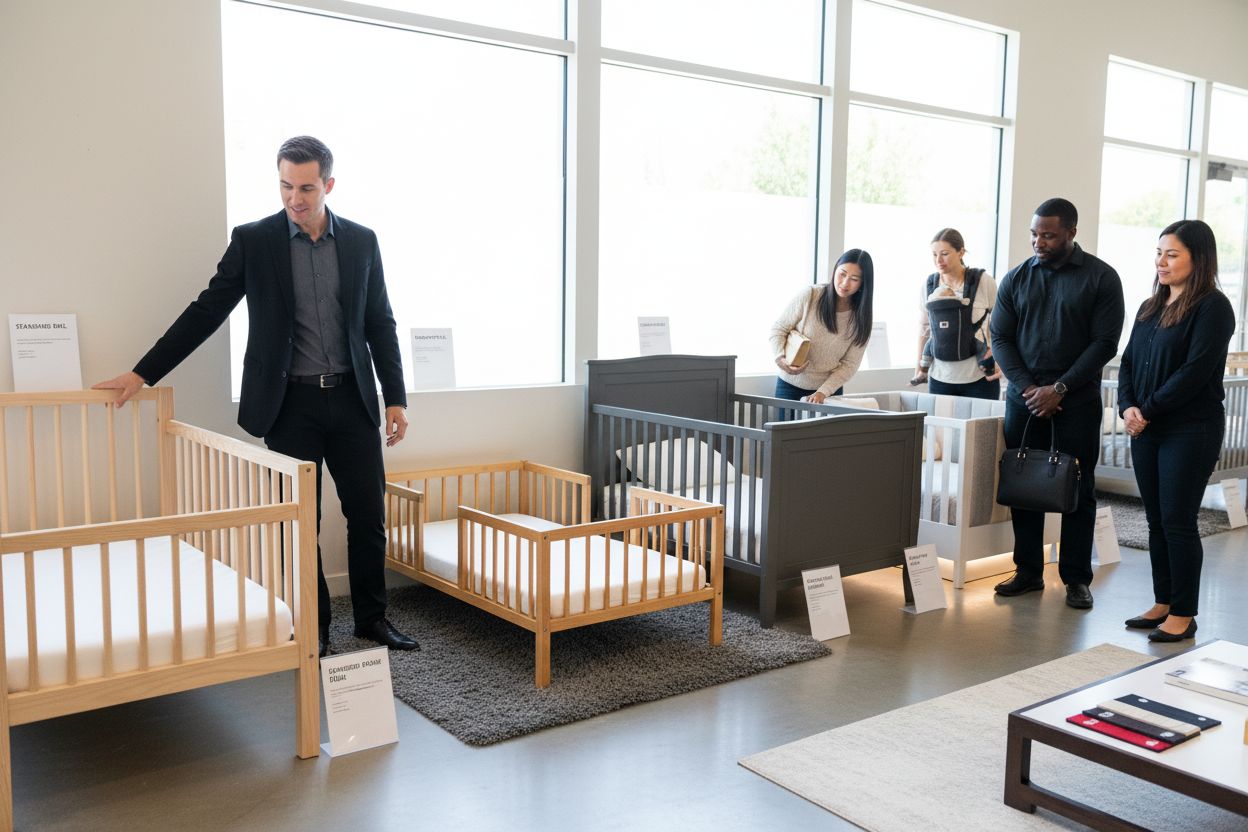
Essential Features and Safety Standards
When it comes to toddler beds, safety isn't just a feature - it's the foundation of every design choice. Parents must navigate a complex landscape of safety requirements, understanding that every detail matters in creating a secure sleep environment for their growing child. The most critical safety standards focus on preventing falls, ensuring structural integrity, and minimizing potential hazards.
Key safety features parents should prioritize include:
- Guardrails at least 5 inches above the mattress surface
- Low-to-ground bed height to minimize injury risk
- Strength-tested slats and frame construction
- Smooth, rounded edges without sharp points
- JPMA (Juvenile Products Manufacturers Association) certification
Beyond the bed itself, comprehensive safety requires a holistic approach to the child's entire sleeping environment. Childproofing extends beyond the bed frame, involving strategic room setup that eliminates potential risks. This means anchoring nearby furniture, removing electrical hazards, installing safety gates, and ensuring the mattress fits snugly without gaps that could trap tiny limbs.
Certification and compliance are not just bureaucratic checkboxes - they represent a critical layer of protection for your child. Beds meeting Consumer Product Safety Commission (CPSC) guidelines undergo rigorous testing for structural strength, material safety, and potential hazard prevention. By selecting a bed with these certifications and maintaining a vigilant approach to room safety, parents can create a secure sleep sanctuary that supports their toddler's growing independence while providing peace of mind.

Transitioning From Cribs to Toddler Beds
Transitioning from a crib to a toddler bed marks a significant developmental milestone that requires careful planning and patience. While exciting, this change can also be overwhelming for both parents and children. The American Academy of Pediatrics suggests that most children are ready for this transition between ages two and three-and-a-half, typically when the child becomes more physically active and can potentially climb out of their existing crib.
Key signs indicating your child might be ready for a toddler bed include:
- Consistently climbing out of the crib
- Height reaching above crib rail when standing
- Expressing interest in a "big kid" bed
- Demonstrating increased physical independence
- Safety concerns about continued crib use
Successful transitions require more than just selecting the right bed. Emotional preparation plays a crucial role in helping your child feel secure during this change. Involve your child in the process by letting them choose bedding, discussing the new sleeping arrangement, and maintaining familiar bedtime routines. This approach helps transform the transition from a potentially stressful experience into an exciting adventure of growing up.
Practical steps can smooth this developmental journey. Childproof the room by removing potential hazards, use low beds with protective guardrails, and be prepared for potential sleep disruptions. Remember that every child adapts differently - some might embrace the change immediately, while others might need more time and gentle encouragement. Patience, consistency, and positive reinforcement will help your toddler feel safe and excited about their new sleeping space.
Space Saving and Eco-Friendly Options
Small living spaces demand creative solutions for children's bedroom furniture, and toddler beds have evolved to meet these challenging requirements. Modern designs focus on maximizing functionality without compromising comfort, offering parents innovative options that adapt to compact urban living environments. Convertible and multi-purpose bed designs have become game-changers for families seeking versatile sleeping solutions that grow with their children.
Key features of space-efficient toddler beds include:
- Compact footprints under 4 feet long
- Built-in storage compartments
- Modular designs that transform with child's needs
- Lightweight materials for easy rearrangement
- Stackable or wall-mountable configurations
Eco-conscious parents are increasingly prioritizing sustainable materials and manufacturing processes when selecting toddler beds. Sustainable options now include beds crafted from recycled wood, bamboo, and non-toxic finishes that minimize environmental impact while providing a safe sleeping environment. These environmentally friendly choices not only reduce carbon footprint but also introduce children to the concept of responsible consumption from an early age.
Beyond physical design, the most sustainable toddler bed is one that offers long-term value. Convertible beds that transition from infant to toddler to full-sized configurations represent the pinnacle of eco-friendly and space-saving design. By investing in a single piece of furniture that adapts through multiple developmental stages, parents can reduce waste, save money, and create a flexible sleep solution that truly grows alongside their child.
Common Mistakes When Choosing Toddler Beds
Navigating the toddler bed selection process can feel like walking through a minefield of potential mistakes. Many well-intentioned parents inadvertently make critical errors that compromise their child's safety, comfort, and sleep quality. Understanding these common pitfalls is crucial for making an informed, thoughtful decision that supports your child's developmental needs.
Frequent missteps parents encounter include:
- Transitioning too early before the child is developmentally ready
- Neglecting proper room childproofing
- Selecting beds without adequate safety guardrails
- Choosing beds incompatible with existing mattress sizes
- Ignoring the importance of maintaining consistent bedtime routines
Safety shortcuts can create dangerous situations that parents must vigilantly avoid. For instance, using crib tents to prevent children from climbing out might seem like a quick solution, but safety authorities strongly discourage this practice due to serious entanglement and suffocation risks. Instead, parents should focus on certified toddler beds with proper safety features and gradually teach children about safe sleeping behaviors.
Beyond physical bed selection, the emotional and psychological approach to transitioning matters immensely. Rushing the process or treating it as a purely functional change can lead to sleep disruptions and anxiety for both parent and child. The most successful transitions involve patience, positive reinforcement, and creating a sense of excitement about this new developmental milestone. By avoiding these common mistakes and approaching the transition thoughtfully, parents can transform what could be a challenging experience into an opportunity for growth and increased independence.
Find the Toddler Bed Solution That Fits Your Family’s Needs
Choosing the right toddler bed can feel overwhelming, especially when safety, space, and your child’s sense of independence are all on the line. After reading about the transition from crib to toddler beds and the importance of features like guardrails, mattress compatibility, and eco-friendly materials, you may be wondering what step to take next. It is easy to feel unsure. Every parent wants to make the safest and smartest choice as their child leaves the crib stage.
You do not have to make these decisions alone. Our expert resources at City Toddler Beds take the stress out of the process. Browse practical guides explaining space-saving options for small rooms and compare trusted reviews on toddler bed safety standards. Learn what to avoid and how to set up your child’s room for both comfort and confidence. Make a confident move by visiting https://citytoddlerbeds.store today. Discover clear answers for every question and give your child the secure sleep space they deserve.
Frequently Asked Questions
What is a toddler bed?
A toddler bed is a specialized sleeping solution designed for children aged between one-and-a-half to five years old. It offers a safe and comfortable transition from an infant crib to a larger bed, featuring low heights, protective side rails, and compatibility with standard crib mattresses.
When should I transition my child from a crib to a toddler bed?
Most children are ready to transition to a toddler bed between ages two and three-and-a-half. Signs of readiness include consistently climbing out of the crib, expressing interest in a 'big kid' bed, or reaching above the crib rail when standing.
What are the different types of toddler beds available?
There are four primary types of toddler beds: Standard Rail Beds, Montessori Floor Beds, Convertible Beds, and Sensory Design Beds. Each type has unique features designed for different needs, such as safety, independence, or long-term use.
What safety features should I look for in a toddler bed?
Key safety features to prioritize include guardrails that are at least five inches above the mattress, a low-to-ground design to minimize fall risks, strength-tested slats and frame construction, smooth edges, and certifications from organizations like the Juvenile Products Manufacturers Association (JPMA).


